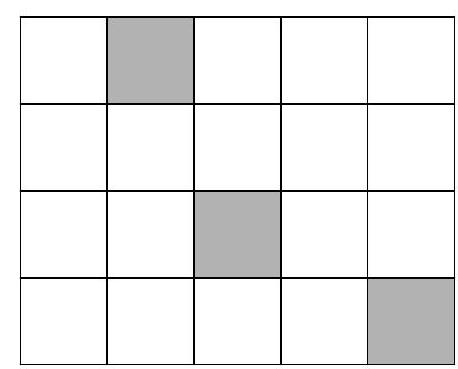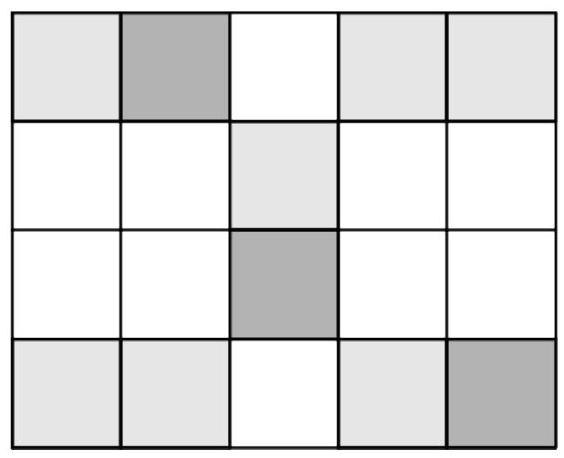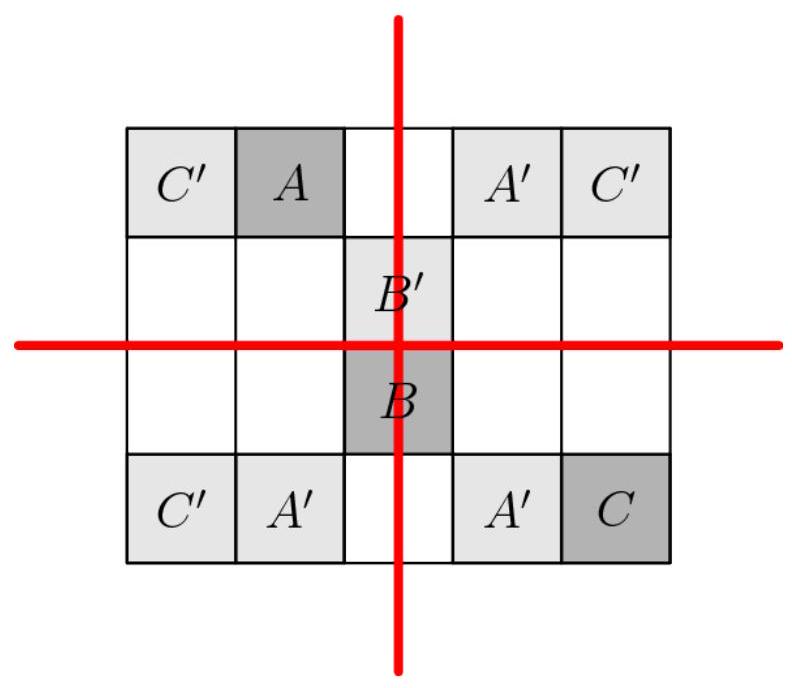¶ 2020 AMC 12A Problem 6
Problem:
In the plane figure shown below, 3 of the unit squares have been shaded. What is the least number of additional unit squares that must be shaded so that the resulting figure has two lines of symmetry?

Answer Choices:
A.
B.
C.
D.
E.
Solution:
The two lines of symmetry must be horizontally and vertically through the middle. We can then fill the boxes in like so:

where the light gray boxes are the ones we have filled. Counting these, we get total boxes.
OR
We label the three shaded unit squares , and , then construct the two lines of symmetry of the resulting figure, as shown below:
.jpg)
Note that:
Since the centers of and are on neither line of symmetry, and each contribute shaded unit squares to the resulting figure. Since the center of is on one line of symmetry, contributes shaded unit squares to the resulting figure. The shaded unit squares contributed by , and are all distinct, so we need to shade at least unit squares in addition, as shown below:

The problems on this page are the property of the MAA's American Mathematics Competitions